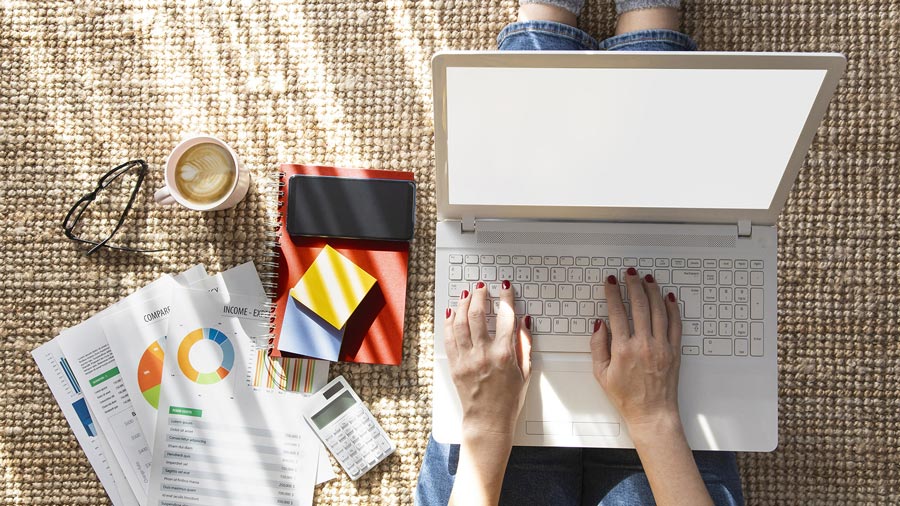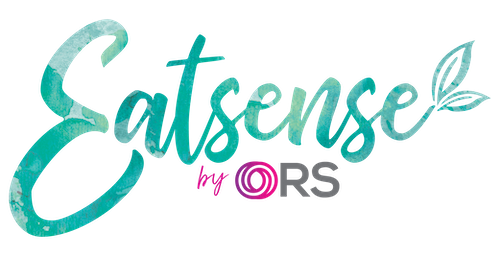
Now more than ever, Australians are working from home. Here’s our guide on how to keep your nutrition in check when working from home.
1. Start the day with a good breakfast:
Research to support the positive effect of eating breakfast on weight is weak to say the least. However, in my clinic I have observed that breakfast skippers tend to fall short when it comes to consuming enough fibre, particularly in the form of fruit and whole-grains (hello porridge, weet-bix and seeded bread). They are also more likely to make poorer food choices as the day goes on and over-consume food at night which we know is not great for our health or waistline. Set yourself up for the day by having a fibre-rich breakfast that ideally contains some protein. You don’t have to eat breakfast as soon as you wake up, in fact fasting for an hour or two and waiting until you’re hungry may be beneficial.
Some of our favourite breakfasts to help you start the day right are:
-
- >> Porridge topped with LSA, hemp seeds or nut butter and fresh fruit
- >> Natural muesli and unsweetened greek yoghurt
- >> Vegetable omelette or eggs on good quality seeded or sourdough bread
- >> Protein smoothie with greek yoghurt, fruit and nut butter or nuts
- >> Baked beans on good quality seeded or sourdough bread
- >> Banana pancakes made with almond meal or oats, eggs and mashed banana
2. Plan regular snack and meal times:
Don’t get into the habit of hitting the ground running first thing in the morning and forgetting to eat until it’s well past lunchtime. Try your best to plan your day out including what time you will wake, what work tasks you want to complete by what time and when you will exercise or shower. Plan your meal times in and around this schedule to stop you from skipping meals or mindlessly grazing all day. In general, aiming for a regular breakfast, lunch , dinner and one or two snacks in between is ideal but eat to your appetite. If you’re someone who starts the day with 3-4 coffees +++ remember this can suppress your appetite so try your best to have one before or with breakfast as coffee is not an adequate meal replacement.
3. Avoid working in the kitchen and eating at your desk:
Try your best not to set your work station up in an area close to the kitchen, otherwise you may find yourself mindlessly wandering to the fridge or pantry, especially if you’re a procrasti-eater. It is also wise to avoid eating at your desk while you’re working away as you’re more likely to misread your fullness cues. Sit outside and get some sunshine will you enjoy your lunch and you’ll also boost your body’s vitamin D production. You’ll feel more relaxed and prepared for the rest of your work day.
4. Plan or prepare your lunches ahead:
Take advantage of the fact that you can put some thought into preparing your lunches instead of scoffing down something from the work cafe in 5 minutes flat at your desk. You can opt for something easy like a wrap with chicken and salad, tuna and brown rice, fruit and protein smoothie, vegetable omelette or last night’s leftovers. Better yet, you can allocate 30-60mins on the weekend batch cooking some meals for the week.
When preparing lunch meals always include:
-
- >> A protein source such as eggs, Greek yoghurt, tofu, legumes, fish, lean meat or chicken to keep you full
- >> At least three different coloured vegetables to get your antioxidants and fibre in
- >> An optional serve of whole-grain or low GI carbohydrate such as sweet potato, brown rice, quinoa, vermicelli noodles, whole-meal pasta, seeded or sourdough bread or buckwheat to help with the mid-afternoon sugar cravings
- >> An optional serve of heart-healthy fats such as nuts, seeds, avocado or extra-virgin olive oil to help give your meal flavour and help you absorb your fat-soluble vitamins
Some of our favourite mid-week lunches to prepare in advance include:
-
- >> Zucchini slice
- >> Chicken and vegetable fried rice with brown rice
- >> Vegetable soup & seeded or sourdough bread
- >> Lentil or chickpea curry and brown rice
- >> Chicken and vegetable tray bake
- >> Tofu stir-fry with vegetables
- >> Lean beef burrito or taco bowl
5. Be a smart snacker:
Snack if you’re hungry, don’t snack if you’re not, its as simple as that. If you are having breakfast a little later because you’re no longer waking early or commuting to work, then you may find you don’t need a snack mid-morning. We suggest having a snack between lunch or dinner as typically these maybe 6hrs++ apart and you’ll likely overeat at dinner or go looking for food late at night.
Some of our favourite snacks include:
-
- >> Raw unsalted nuts
- >> Activate Foods Banana Bread
- >> Bliss balls and protein balls
- >> Boiled eggs
- >> Tinned tuna or salmon
- >> Edamame beans
- >> Roast chickpeas or fava beans
- >> Greek yoghurt
- >> Fresh fruit
- >> Apple or banana slices topped with nut butter such as natural peanut butter
- >> Seeded crackers topped with avocado or cottage cheese
- >> Vegetable sticks and hummus
- >> Air-popped popcorn
6. Keep hydrated:
If you’re wanting to be alert and productive, then keeping hydrated is key! Keep a water bottle or glass of water on your desk. Water is best but you can also hydrate from mineral or soda water, low-sugar kombucha and tea. Often when we are dehydrated we may feel low on energy or a headache may creep up making us susceptible to grabbing something high in sugar to give us a boost.
And lost but not least, we are all feeling stressed, uncertain and anxious at the moment. You may find yourself comfort or mindlessly eating from time to time, and that is ok. We all deal with things the best way we can and having some chocolate or cookies is not a deal breaker. Don’t make yourself feel bad and you’ll bounce back faster than someone who immediately starts berating themself.
